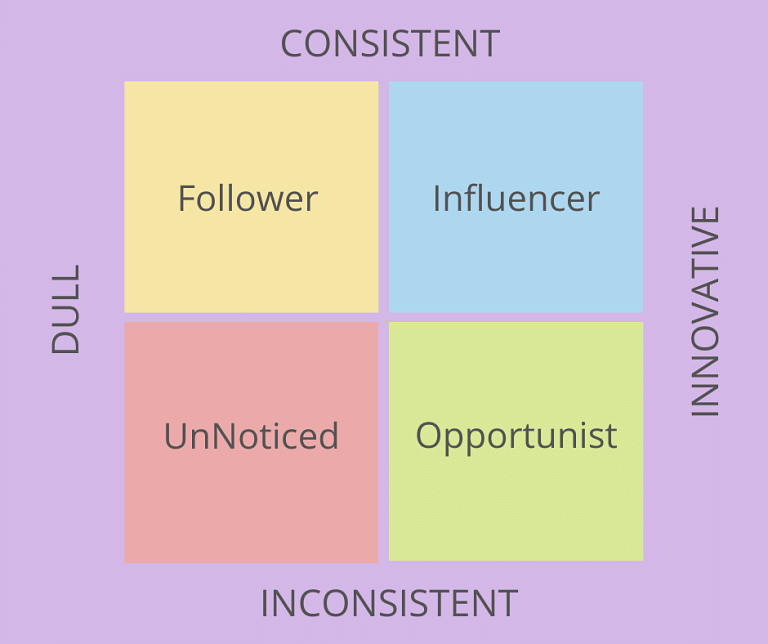
When to publish, who to tap, which tools to use: Answering content-related questions from the ‘Unemployable’
By Jim James, Founder EASTWEST PR and Host of The UnNoticed Entrepreneur.
I recently delivered a presentation before Jerod Morris and Brian Clark’s Unemployable Initiative community where I talked about the SPEAK|PR program. This article rounds up the second part where I entertained questions from Jerod and the audience.
Image from Unemployable
Determining the Best Time to Send Your Content
In the first part of my talk, I emphasised the importance of when business owners and entrepreneurs should send content. When people create content, they tend to get excited to get it out right away after it’s done.
However, there’s a need to be patient; you have to determine first when is the optimal time to send your content to your audience.
When determining that, you have to use common sense first. Think about who your avatar is — who is going to receive the content. If it’s for a student who’s going to a UK university in China, you need to send your information at certain times of the year when those students are looking to study overseas. You should also look into the life patterns of people. Are they driving? Is it a weekend?
There are also analytics tools that you can use for this. For example, I use Zoho, which allows me to automatically schedule when people are most likely to open my emails. I can also choose by time zone and by when my audience is likely to open my newsletter. HubSpot also offers the same feature.
It’s really a matter of applying common sense first and utilising (but not completely relying on) some technology. Tools like Zoho are especially helpful if you’re sending content to a global audience.
Image from Freepik
When you’re sending out press releases, making sure that people get your content at the right time of the day is also absolutely key. In the industry, Tuesdays and Thursdays are considered optimal days. Because Monday is when a journalist just gets through everything; Tuesday, they have the time to think; Wednesday and Thursday, they’re making the story; Friday, they’re filing.
This shows that when sharing your content, you have to know that different audiences have their own particular needs.
The timing also dictates the platform where they’re going to receive your content. For instance, if you’re sending out information when people are commuting in the morning, they would have to receive it on a mobile phone. Or if they’re in a car, audio content is great. But if they’re already at their desks, consider that they’d most likely put their phone to one side and work on the big screen.
You have to take into account which platform is going to be the most appropriate to deliver your content. Even if it’s all on Twitter, people still interact with it on different devices. Now, Google is also bifurcating by doing a location-based search for mobile and for desktop.
Finding the Right Influencers
In the earlier part of my presentation, I also discussed how it’s not always ideal to go to one hero or heroine influencer; instead, you need to find people who are ready to be influenced. For some people, Jerod noted that it might be a paradigm shift or something that’s different than what they expect. People often think that they need to find a big influencer among their target audiences and it seems like a good thing to do.
But what are the benefits and drawbacks of finding an influencer, especially if that influencer has some pull with your audience? How do you go about finding people who are ready to be influenced? How can you find these whole bunch of smaller people instead of just one huge influencer?
First, keep in mind that smaller doesn’t mean that they’re shorter in any way. One of my clients recently paid a lot of money to an influencer to be seen drinking tea out of a mug that my client makes. As a result, he was able to sell three mugs. In reality, his target audience comprises shops that buy his mugs. And these shop owners aren’t influenced by that person drinking tea. They’re interested in stock cycles and payment terms among other things.
Image from Freepik
Sometimes, people go for an influencer without thinking who their audiences are first. But when reaching out to a huge influencer — for instance, someone who has influence in cosmetics — it doesn’t mean that the people who follow them for cosmetics believe that they’re knowledgeable about other aspects such as finance or automobiles. If someone is knowledgeable about one domain, they can be influential for that particular domain but not necessarily for others.
In the case of selling mugs, it will be much better to find someone who has a very successful wholesale distribution business who can say to others that they can make the best margin with your mugs. The people that this person knows and can influence are the very audience that you want to sell your product to.
Sometimes, people make the mistake of tapping influencers whose communities are not necessarily the audiences that they need to sell to. In China, for example, there are people with a lot of influence. However, some of their followers are not even real followers. There are people who have padded out there.
How do you find, then, the right people to tap?
In the presentation, I mentioned what I’ve been working on with my mug manufacturer client, which is doing the value chain. This entails looking at who else is buying what you’re selling and, at the same time, has a community of other people who are like them. And this is the whole concept of social proof.
Social proof doesn’t necessarily mean that they want to wear the same makeup. It could be that they want to buy the same electric car or they want to have the same franchise opportunities. This is also why the avatar is important. Knowing who your avatar is will make it easier for you to find them.
For instance, in the case of my mug-maker client, there are retail associations that sell products to his target customers. In this scenario, he’d be much better off talking to those people who actually have other people who are buying for the same reason.
On Making Interesting and Innovative Content
I showed before the Unemployable community a quadrant tackling content quality and frequency of distribution. And what struck Jerod is having that self-awareness of whether the content that you’re putting out is dull or innovative. But what signals should people be looking for when it comes to knowing where their content lies on that scale?
The straightforward answer is when no one’s sharing or liking your content. If you’re a standup comedian and no one’s laughing at your gags, it means that your material is not that funny.
The number one problem that I encounter with my clients is that they don’t know what else they can say about themselves. But as I reiterate in my SPEAK|PR methodology (under storify and personalise), your content is not about you.
I have worked with a client and she has a big engineering company. She said that they’ve been putting pictures of turbines on the internet yet no one likes them and no one’s following them. When I asked her how interesting that would be, she stated that it would be interesting for people who like turbines in the first place. Then I asked her where are their customers and the people in their company in their contents.
With that in mind, she went back and found that the origin of their company was in saving soldiers in World War I. Back then, the tanks that soldiers used, used to overheat. They then developed some fins that cooled the engines down. She came up with a whole narrative around their business saving lives. Because when engines break down, people can’t do their work. She also went to the field (they have factories in Brazil and customers in Africa) and started to get really rich content from people using their product.
The paradigm shift here is that public relations is not about you. It’s about what you do for others. If you look at Apple, they have billboards in the UK whose featured images were pictures taken by Apple users and not by the company. Even the big companies are saying that it’s not about them or their technology but how their customers use it.
Also, keep in mind that when you reach out and feature your customers, asking what they’re doing with your product, they’d be willing to share it with their network because people love to be covered. They love to get recognition for themselves and feel that they’re important. This is how you start the network effect.
On Automating and Outsourcing Content Creation
When you’re creating your own content, you’re also creating a platform where your staff, customers, and partners can share stories of how you impact them. Therefore, you have to change your mindset — from doing it all yourself to having other people do it, too.
Apple is the best example of this. When they hold a developer conference, everybody talks about what they're going to do next.
Image from Freepik
One of the things that you can do is to ask your customers, partners, and staff to originate content for you. You can give them frameworks, tell them what they’re doing, and give them the channels wherein they can do it.
For example, partners often want to sell to the same people as your target audience. In this regard, you can think about content creation as a collaborative exercise with them rather than something that you do yourself.
You also have to know that technology is your friend. There are many great tools out there such as Jarvis, which you can use for a PR contributed article. If you look at video creation, there’s Lumen5. Through that tool, my sister Shelley and I were able to create videos about the impact of light on well-being. She’s a lumenologist and we wanted to share the message of how light can impact children during the lockdown.
To create those, we first went to some studios. But they said that they’d charge £10,000. So I tinkered with Lumen5 (I am fond of Artificial Intelligence (AI) tools because my PR business also does PR for tech companies). This tool allows you to input keywords and it will automatically find related images for you.
Using Lumen5, we were able to make an explainer video in half an hour. We made five videos in total and it only cost us $80 a month. The videos now have a collective 2 million views.
There are also tools that you can use to create audiograms. There are tools like Repurpose.AI that can help you amplify your content. I also use Descript, which is excellent for audio and video content.
To reiterate, you have to have people that can create content for you. Your role is to be the curator. Not many people think of it but your staff and your team are a great source of content.
In the UK, there’s a platform called mo.work and it allows people within a company to give gifts and share rewards. That content can be used for social media. For instance, if a birthday cake gets given in your office, that can already be a piece of video or photo content. With platforms such as mo.work, you can take that content and further amplify it.
What you want to show through this is that you’ve got a happy staff. It’s also better to let your staff themselves show that they’re happy through platforms like Glassdoor.
Image from Freepik
When it comes to creating content, you just have to collaborate, use technology, and get everybody to be part of your curation. Your job is to curate, similar to what I did with my The UnNoticed Entrepreneur book where I curated 50 articles.
For the book, I used a software called Dabble Writer, which is an online collaboration tool. Tackling outsourcing, I mentioned during my presentation that I have virtual assistants in the Philippines. One VA made my podcast transcripts into articles; another loaded them into Dabble Writer. Then I did the editing. We then exported the output and endorsed it to someone in Ukraine for the page layout.
Simply put, content creation is about curation or collective creation, the use of AI tools, and outsourcing.
This is especially helpful for businesses that may not have a team or have employees. Through collaboration, even a one-person business can work with several complementary businesses and share their stories on each others’ posts. This is also the benefit of building a community. Because if you have a community, you have people who can start creating content and stories that you can share.
It further underscores the importance of knowing who your customers are. Because in that customer’s profile, there will be many other vendors (e.g. advertising and SEO agencies). Through that, you can find several other businesses that sell different services to the same audience that you’re aiming for, and partner up with them. In my book, I have featured people from all different disciplines. There are those who do auto signatures and there are those who do video graphics.
To learn more about the SPEAK|PR methodology, you can check out my book, The UnNoticed Entrepreneur, on Amazon and Barnes and Noble.
This article is based on a transcript from my podcast The UnNoticed Entrepreneur, you can listen here.
Cover image by Rawpixel.com on Freepik







